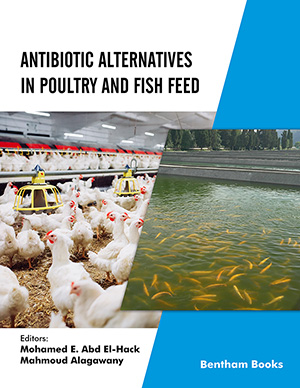Abstract
Background: Rapid lifestyle, especially among people living in urban areas, has led to increasing reliance on the processed food market. Unfortunately, harmful effects caused by the excessive use of food additives in such type of industry are often neglected.
Objective: This proposal investigates in vitro cytotoxic and apoptotic effects of three food preservatives commonly consumed in daily meals; sodium sulphite, boric acid, and benzoic acid.
Methods: The effect of the three preservatives on cell viability was tested on two different cell lines; normal liver cell line THLE2 and human hepatocellular carcinoma cancer cell line HepG2 using MTT assay. Cell cycle arrest was measured using flow cytometry by propidium iodide. Measurement of expression levels of two central genes, p53 and bcl-2 that play key roles in cell cycle and apoptosis was carried out in HepG2 cells using real time-PCR.
Results: Although the effect was more significantly realized in the HepG2 cell line, the viability of both cell lines was decreased by all of the three tested compounds. Flow cytometric analysis of HepG2 cells treated with sodium sulphite, boric acid, and benzoic acid has revealed an increase in G2/M phase cell cycle arrest. In Sodium sulphite and boric acid-treated cells, expression levels of p53 were up-regulated, while that of the Bcl2 was significantly down-regulated. On the other hand, Benzoic acid has shown an anti-apoptotic feature based on the increased expression levels of Bcl-2 in treated cells.
Conclusion: In conclusion, all of the tested compounds have decreased the cell line viability and induced both cell cycle arrest and apoptotic events indicating their high potential of being cytotoxic and genotoxic materials.
Keywords: Cytotoxic, genotoxic, cell cycle arrest, real-time PCR, cell lines, food additives.
[http://dx.doi.org/10.14573/altex.2013.3.319] [PMID: 23861077]
[http://dx.doi.org/10.1080/09723757.2004.11885906]
[http://dx.doi.org/10.2131/jts.32.571] [PMID: 18198487]
[http://dx.doi.org/10.1016/j.mrgentox.2006.07.006] [PMID: 17005441]
[http://dx.doi.org/10.1016/j.fct.2007.10.035] [PMID: 18068884]
[http://dx.doi.org/10.1007/978-1-4899-3103-0]
[http://dx.doi.org/10.1016/j.canlet.2004.06.001] [PMID: 15500945]
[http://dx.doi.org/10.4238/gmr.15028300] [PMID: 27420953]
[http://dx.doi.org/10.1111/j.1600-0773.1983.tb02685.x] [PMID: 6880789]
[http://dx.doi.org/10.1023/A:1020580818979] [PMID: 19002920]
[http://dx.doi.org/10.1016/S1387-2656(05)11004-7]
[http://dx.doi.org/10.1023/A:1007130923558] [PMID: 11189750]
[http://dx.doi.org/10.1006/excr.1996.0329] [PMID: 8912723]
[http://dx.doi.org/10.1007/s11010-006-9222-7] [PMID: 16733797]
[http://dx.doi.org/10.1016/S0091-679X(08)61718-5] [PMID: 7532262]
[http://dx.doi.org/10.1002/(SICI)1097-0320(19960901)25:1<1::AID-CYTO1>3.0.CO;2-N] [PMID: 8875049]
[http://dx.doi.org/10.1016/S0091-679X(01)63023-1] [PMID: 11060852]
[http://dx.doi.org/10.1155/2014/893247] [PMID: 24812569]
[http://dx.doi.org/10.1007/s11596-014-1278-0] [PMID: 24939294]
[http://dx.doi.org/10.1038/bjc.1972.33] [PMID: 4561027]
[http://dx.doi.org/10.1016/S0163-7258(97)00037-5] [PMID: 9504137]
[http://dx.doi.org/10.1038/nm1146]
[http://dx.doi.org/10.1016/S0092-8674(00)81871-1] [PMID: 9039259]
[http://dx.doi.org/10.1016/j.semcancer.2004.04.003] [PMID: 15219617]
[http://dx.doi.org/10.1155/2012/170325] [PMID: 22911014]
[http://dx.doi.org/10.1242/jcs.038166] [PMID: 19795525]
[http://dx.doi.org/10.1371/journal.pone.0076000] [PMID: 24098753]
[http://dx.doi.org/10.1016/j.febslet.2011.02.029] [PMID: 21354418]
[http://dx.doi.org/10.3844/ajassp.2010.620.627]
[http://dx.doi.org/10.1016/0735-6757(88)90001-0] [PMID: 3370093]
[http://dx.doi.org/10.1007/s10616-014-9755-7] [PMID: 25159521]
[PMID: 12385577]
[http://dx.doi.org/10.1002/pros.10166] [PMID: 12481254]
[http://dx.doi.org/10.3390/molecules23040723] [PMID: 29565269]
[http://dx.doi.org/10.1016/j.fct.2015.12.016] [PMID: 26706697]
[http://dx.doi.org/10.1590/s2175-97902018000100031]
[PMID: 10999770]
[http://dx.doi.org/10.1186/s12906-017-1583-9] [PMID: 28103869]
[http://dx.doi.org/10.1016/S0027-5107(01)00292-5] [PMID: 11804602]
[http://dx.doi.org/10.1016/0092-8674(94)90201-1] [PMID: 7954799]
[http://dx.doi.org/10.1016/S0378-4274(02)00498-8] [PMID: 12676452]
[http://dx.doi.org/10.1038/emm.2000.5] [PMID: 10762058]
[http://dx.doi.org/10.1038/nrc2718] [PMID: 19776743]
[http://dx.doi.org/10.1038/ncb1123] [PMID: 15077116]
[http://dx.doi.org/10.1074/jbc.272.48.30299] [PMID: 9374516]
[http://dx.doi.org/10.1556/2060.103.2016.3.6] [PMID: 28229641]
[http://dx.doi.org/10.1111/j.1750-3841.2011.02267.x]
 88
88 1
1



















